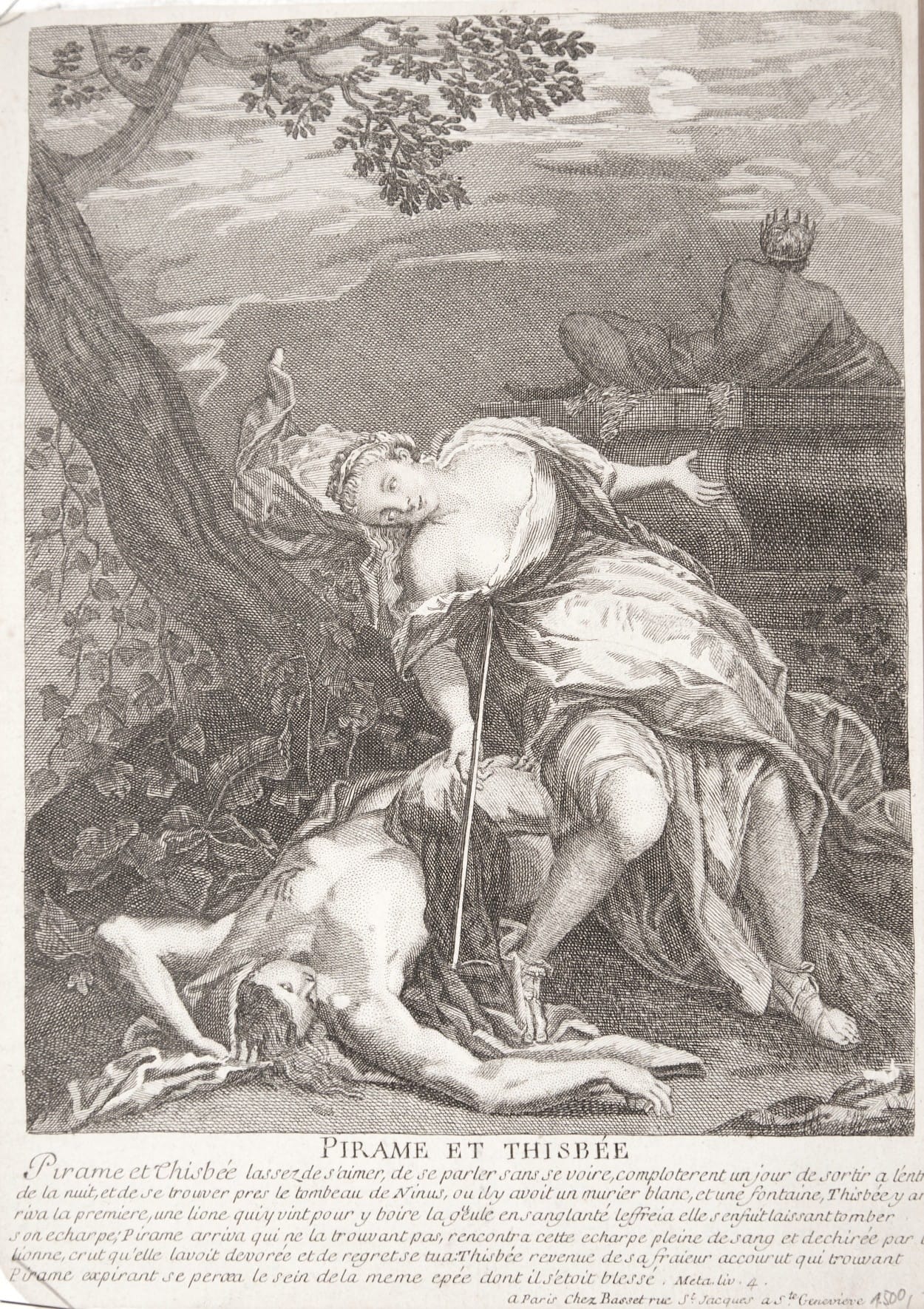The timeless myth of Pyramus and Thisbe offers a poignant exploration of forbidden love, miscommunication, and tragic consequences. Journey with us to ancient Babylon and witness the heartbreaking tale of two lovers separated by a wall and feuding families, a story immortalized in Ovid’s *Metamorphoses*.
A Love Divided by Walls
Imagine ancient Babylon, a bustling city teeming with life. Yet, amidst this vibrant backdrop, a love story unfolds, tinged with both sweetness and sorrow. Pyramus, a strikingly handsome young man, and Thisbe, renowned for her captivating beauty, lived in adjoining houses, their families locked in a bitter, long-standing feud. This feud, reminiscent of the Montagues and Capulets, created an insurmountable barrier between the two young lovers, forbidding any open expression of their affections. Their only connection? A tiny crack in the shared wall, a fragile lifeline for whispered affections and stolen moments. This clandestine communication, some scholars suggest, likely intensified their bond, much like shared secrets often do. Ongoing research explores the psychological impact of such hidden relationships, analyzing how secrecy can both strengthen and strain a connection.
A Secret Meeting and a Cruel Twist of Fate
Unable to bear the separation any longer, Pyramus and Thisbe arranged a secret rendezvous under a mulberry tree near the tomb of King Ninus—a dramatic setting for a fateful encounter. Thisbe, eager with anticipation, arrived first. However, as she waited, a lioness, fresh from a kill, its jaws dripping with blood, appeared on the scene. Terrified, Thisbe fled, dropping her veil in her haste. The veil, a delicate piece of fabric, lay stained crimson. Pyramus arrived later, finding the blood-soaked veil. He immediately jumped to the worst possible conclusion, his heart shattering at the thought of Thisbe’s demise. Without seeing any footprints leading away, only the veil and signs of a struggle, Pyramus drew his sword and, in a moment of unbearable grief, took his own life. This impulsive act, fueled by despair, underscores the depth of his love for Thisbe. Some experts believe that the societal pressures of the time, combined with the forbidden nature of their relationship, may have contributed to his drastic reaction. It’s important to remember the cultural context of ancient Babylon, likely very different from our modern understanding.
A Tragedy Unfolds
Thisbe, the danger passed, returned to the mulberry tree, only to be met with a horrific sight: Pyramus lay lifeless, his blood staining the ground. The tragic misunderstanding became agonizingly clear. Overcome with despair, she grabbed Pyramus’s sword and, mirroring his tragic act, ended her own life. The mulberry tree, stained with their blood, became a poignant symbol of their love and loss. Legend has it that the mulberries, once white, were forever stained a deep red, a permanent reminder of the lovers’ tragic fate. This transformation adds another layer of symbolism to the myth, forever linking their love and loss to the natural world.
The Enduring Legacy of Pyramus and Thisbe
The tale of Pyramus and Thisbe isn’t merely a sad story; it’s a timeless myth that explores universal themes—the pain of forbidden love, the dangers of miscommunication, and the often cruel hand of fate. It serves as a cautionary tale, reminding us of the destructive nature of societal barriers and the overwhelming power of love. It also prompts reflection on the fragility of life and the importance of clear communication. What if their families hadn’t been enemies? What if Pyramus had waited just a little longer? What if Thisbe hadn’t lost her veil? The “what ifs” are heartbreaking, highlighting the potential for a different outcome. Ongoing research continues to explore the cultural significance of this myth and its various interpretations throughout history.
Who Was Pyramus’s Beloved in Myth?
Thisbe, Pyramus’s beloved, wasn’t just a beautiful face in ancient Babylon; her radiance captivated all who knew her. Pyramus, completely smitten, saw her as his soulmate, his everything. But their love story, tragically, was far from a fairy tale. The bitter feud between their families turned their love into a dangerous secret, hidden from the judging eyes of society. Stolen glances and whispered words became their only solace, fueling their longing and frustration. Their primary means of communication—a crack in the wall separating their houses—became a symbol of both their connection and their confinement. This clandestine communication probably intensified their bond, as shared secrets often do. Scholars suggest that this furtive exchange likely fueled their love, making it even more precious. Current research explores the psychology of such hidden relationships, investigating how secrecy can both strengthen and strain a bond.
The infamous mulberry tree incident marked a devastating turn in their story. Thisbe, arriving first at their planned meeting place, encountered a lioness, its jaws still dripping with the blood of a recent kill. Terrified, she fled, dropping her cloak. The lioness, perhaps playfully or out of curiosity, pawed and mouthed the cloak, leaving it stained with blood. Pyramus, finding the blood-soaked cloak, immediately assumed the worst. With no footprints leading away, he was led to a tragic misinterpretation. Overcome with grief, believing Thisbe to be dead, he took his own life. This act, impulsive and fueled by despair, highlights the depth of his love for Thisbe. Some experts theorize that the societal pressures of the time, combined with the forbidden nature of their relationship, may have contributed to his drastic reaction. It’s important to view this event through the lens of ancient Babylonian culture, which would have differed significantly from our own.
Thisbe, returning to the scene, found Pyramus’s lifeless body. The tragic misunderstanding became devastatingly clear. Overwhelmed by guilt and sorrow, she took her own life with Pyramus’s sword, choosing death over a life without him. The mulberry tree, stained with their blood, became a symbol of their tragic love, with the legend of the berries changing from white to red serving as a poignant reminder of their shared fate.
| Detail | Description |
|---|---|
| Names | Pyramus and Thisbe |
| Location | Ancient Babylon |
| Relationship | Forbidden lovers |
| Communication | Through a crack in a shared wall |
| Catalyst | Misunderstanding caused by a lioness, a blood-stained cloak, and assumptions |
| Outcome | Double suicide under a mulberry tree |
| Symbolic Element | The mulberry tree’s berries turning from white to red, representing the lovers’ blood and the tragic nature of their love. |
Their story serves as a cautionary tale about the importance of communication and the dangers of assumptions. It also highlights the devastating impact of societal pressures and the pain of forbidden love. While some details of the myth may be embellished, the story continues to resonate with readers today, prompting us to contemplate the complexities of love, loss, and human relationships. Ongoing research explores the cultural significance of this myth and its various interpretations throughout history. Before playing the actual pick 3 lottery, you can first try some tricks here to help you get a grasp of it.
Were Pyramus and Thisbe Truly in Love?
Pyramus and Thisbe’s story isn’t just about love; it’s about a love so profound and intense that it defied boundaries and ultimately led to tragedy. It echoes the tale of Romeo and Juliet, but predates Shakespeare by centuries. Their love, forbidden by a bitter family feud, forced them into secrecy, their only connection a small crack in the wall separating their homes. Imagine pouring your heart out to someone through such a tiny, fragile connection. This clandestine communication likely deepened their bond, making their love all the more precious. Scholars suggest that this secrecy may have intensified their feelings, as shared vulnerabilities often do. Eventually, whispering wasn’t enough. They yearned for a real-world connection, leading them to plan a risky, secret meeting under a mulberry tree.
Thisbe arrived first, only to be startled by a lioness fresh from a kill. In her terror, she fled, dropping her veil. The lioness, with blood-stained jaws, tossed and tore the veil, leaving it crimson. Pyramus, arriving later, found the bloodied veil and immediately made a tragic assumption. The thought of a world without Thisbe, especially after coming so close to finally being together, was unbearable. Overcome by grief, he took his own life under the mulberry tree. Some experts believe that societal pressures, coupled with the forbidden nature of their love, may have exacerbated his reaction. It’s essential to consider the cultural context of ancient Babylon when interpreting this event.
Thisbe returned, her heart full of hope, only to find Pyramus’s lifeless body and the evidence of the tragic misunderstanding. Heartbroken and unable to bear the pain, she took her own life with Pyramus’s sword. The scene, filled with profound sadness, highlights the devastating consequences of assumptions. Some scholars suggest that their story serves as a cautionary tale. Others view it as a symbolic representation of the challenges faced by lovers in a society bound by rigid rules. The mulberry tree, stained with their blood, remains a powerful symbol, open to interpretation. Perhaps it signifies both enduring love and their untimely deaths. Centuries later, their story continues to resonate, reminding us of the power of love, the pain of loss, and the fragility of life. Though the details may seem ancient, their emotions—longing, fear, and despair—remain timeless and universal. There are plenty of ways that you can use to quench your thirst for the world of printmaking.
Was the Story of Pyramus and Thisbe a Tragedy?
The tale of Pyramus and Thisbe undoubtedly qualifies as a tragedy. Like Romeo and Juliet, it explores the devastating consequences of forbidden love and miscommunication. The lovers’ families, locked in a bitter rivalry, created an insurmountable barrier. This “forbidden love” trope intensifies the tragic element, mirroring situations where societal constraints or external forces prevent the fulfillment of love. Their forced separation, their yearning for connection whispered through a crack in a wall, underscores the cruelty of fate. This longing resonates with audiences, making their story both relatable and heartbreaking.
Their planned secret meeting under a mulberry tree becomes a turning point. The lioness, the dropped veil, and Pyramus’s fatal misinterpretation create a chain of events rooted in tragic misunderstanding. This element of miscommunication, a common trope in tragedies, highlights the fragility of life and how easily circumstances can unravel. Pyramus’s suicide, driven by grief and guilt, is a devastating consequence of this miscommunication. Thisbe’s subsequent suicide, upon discovering Pyramus’s lifeless body, solidifies the story’s tragic nature. The double suicide, a consequence of circumstance and miscommunication, leaves the audience with a sense of profound loss and sadness.
| Element of Tragedy | How it appears in Pyramus and Thisbe |
|---|---|
| Forbidden Love | The families’ feud prevents Pyramus and Thisbe from being together. |
| Fate/Circumstance | The lioness and the lost veil lead to a fatal misunderstanding. |
| Miscommunication | Pyramus misinterprets the scene and believes Thisbe is dead. |
| Suffering/Loss | Both lovers die, highlighting the devastating consequences of the feud and the miscommunication. |
| Catharsis (emotional release for the audience) | The audience experiences pity and fear, reflecting on the fragility of life and the destructive power of societal constraints. |
Scholars continue to debate the story’s interpretations, from a cautionary tale about unchecked anger to a commentary on societal pressures. However, its enduring legacy is undeniable. The story reminds us of love’s power, loss’s pain, and the tragic consequences of miscommunication and societal barriers. While the specific challenges faced by Pyramus and Thisbe may seem distant, their plight resonates because it taps into universal human experiences. Their story invites us to contemplate the complexities of human relationships and the unpredictable nature of fate, leaving a lasting impact long after we’ve finished reading.
- China II Review: Delicious Food & Speedy Service - April 17, 2025
- Understand Virginia’s Flag: History & Debate - April 17, 2025
- Explore Long Island’s Map: Unique Regions & Insights - April 17, 2025

















2 thoughts on “Pyramus and Thisbe: The Beloved’s Tragedy in Ancient Babylon”
Comments are closed.